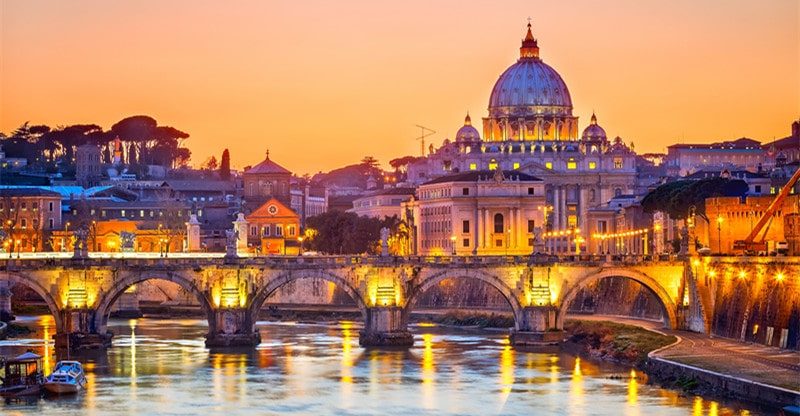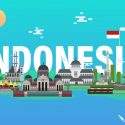Europe’s Kaleidoscope: Diverse Cultures, Shared Dreams
Europe stands as a continent of incredible diversity, where each nation contributes its unique hue to the vibrant mosaic of cultures, languages, and traditions. This rich tapestry is bound together by shared dreams and values, making Europe a fascinating destination for travellers seeking to immerse themselves in its varied cultural landscape.
Among the myriad ways to explore this diversity, the journey by train from Berlin to Prague epitomizes the ease with which one can traverse these cultural boundaries, offering a seamless passage from the heart of Germany’s modernity to the historic soul of the Czech Republic.
The Gateway to Cultural Journeys: Berlin
Berlin, a city that has witnessed profound historical events, stands today as a beacon of art, innovation, and freedom. The city’s streets are alive with the spirit of creativity, from the graffiti-laden remnants of the Berlin Wall to the cutting-edge galleries of Mitte.
Berlin’s cultural landscape is a reflection of its turbulent past and its dynamic present, offering visitors a rich array of experiences that range from exploring its museums and monuments to indulging in its vibrant nightlife and diverse culinary scene.
A Passage Through Time: The Rail Odyssey
Embarking on the rail odyssey between Berlin and Prague, travellers embark on a voyage that connects two of Europe’s most captivating cities, serving as a gateway to the continent’s rich tapestry of landscapes and histories. This journey stands as a tribute to Europe’s vast network of connectivity, showcasing how modern infrastructure paves the way for seamless exploration across nations.
As the journey unfolds, passengers are treated to a picturesque parade of natural beauty – from rolling hills and lush forests to charming villages, each glimpse out of the window offers a snapshot of the diverse scenery that embellishes the cultural landscape of Europe.
The Lingua Franca of European Culture
Europe’s cultural dialogue extends beyond the visual and architectural; it is deeply embedded in the languages, literature, and music that permeate the continent. The literary works of Shakespeare, Goethe, and Dostoevsky, the compositions of Mozart, Beethoven, and Chopin, and the artistic revolutions led by Picasso, Van Gogh, and Klimt, all contribute to a shared cultural language that transcends national boundaries.
This lingua franca of creativity and expression allows travellers to connect with Europe’s soul, discovering the universal themes of love, conflict, and aspiration that are woven into the fabric of its culture. Engaging with Europe’s artistic heritage, whether through the hallowed halls of its museums, the pages of its literary masterpieces, or the melodies that echo in its concert halls, offers a deeper understanding of the continent’s collective identity and individual expressions.
Prague: The Heart of Bohemia
Arriving in Prague, the City of a Hundred Spires, one is immediately captivated by its fairy-tale architecture and the timeless beauty of its historic centre, a UNESCO World Heritage Site. Prague’s streets and alleys tell stories of centuries past, from the Gothic grandeur of St. Vitus Cathedral to the Baroque elegance of the Charles Bridge.
Yet, Prague is not merely a relic of the past; it is a living, breathing city where traditional beer halls coexist with trendy cafes, and classical concerts are as celebrated as contemporary art installations. Prague embodies the essence of European culture: a seamless blend of history and modernity, tradition and innovation.
Europe’s Cultural Kaleidoscope
The journey from Berlin to Prague is but a single thread in the vast tapestry of Europe’s cultural diversity. Each country, each city, and each village across the continent adds its own colour and texture to the overall picture. From the sun-kissed Mediterranean shores of Spain and Italy to the rugged landscapes of the Nordic countries, from the ancient ruins of Greece to the avant-garde fashion districts of Paris and Milan, Europe is a kaleidoscope of cultures and experiences.
Exploring Europe, whether by train, plane, or foot, offers an opportunity to engage with the continent’s shared dreams: dreams of peace, unity, and prosperity, dreams that are reflected in the European Union’s motto, “United in Diversity.” This unity is not about erasing differences but celebrating them, recognising that it is the diversity of its people, languages, and cultures that makes Europe truly rich and fascinating.
The Future of European Unity
As Europe moves forward, it faces the challenge of maintaining its unity while respecting the distinct identities of its member states. The continent’s future lies in its ability to embrace innovation and change while holding on to the rich heritage that defines it. The burgeoning fields of digital art, contemporary music, and modern literature are testament to Europe’s dynamic cultural evolution, offering new ways for old and new generations to communicate and share ideas.
The continuing expansion of its transport networks, like the trains that seamlessly link cities such as Berlin and Prague, symbolises Europe’s commitment to connectivity and accessibility, making cultural exploration an ever more integral part of understanding and appreciating this diverse continent.
As travellers and citizens alike navigate Europe’s kaleidoscope, they participate in an ongoing conversation about what it means to be European in an increasingly globalised world, highlighting the importance of unity in diversity as the cornerstone of Europe’s shared dreams and future.
Conclusion: A Continent United by Diversity
Europe’s strength lies in its diversity, in the myriad ways its countries and peoples have shaped their identities while contributing to a collective heritage. The train journey from Berlin to Prague symbolizes this interconnectedness and the ease with which one can dive into the heart of Europe’s cultural expanse.
As travellers explore the continent’s cities and landscapes, they are invited to partake in a shared journey of discovery, to celebrate the differences that make Europe a mosaic of human experience. In embracing this diversity, we find a common ground, a shared dream of understanding, respect, and unity that transcends borders and binds us all as global citizens in the kaleidoscope of Europe.



